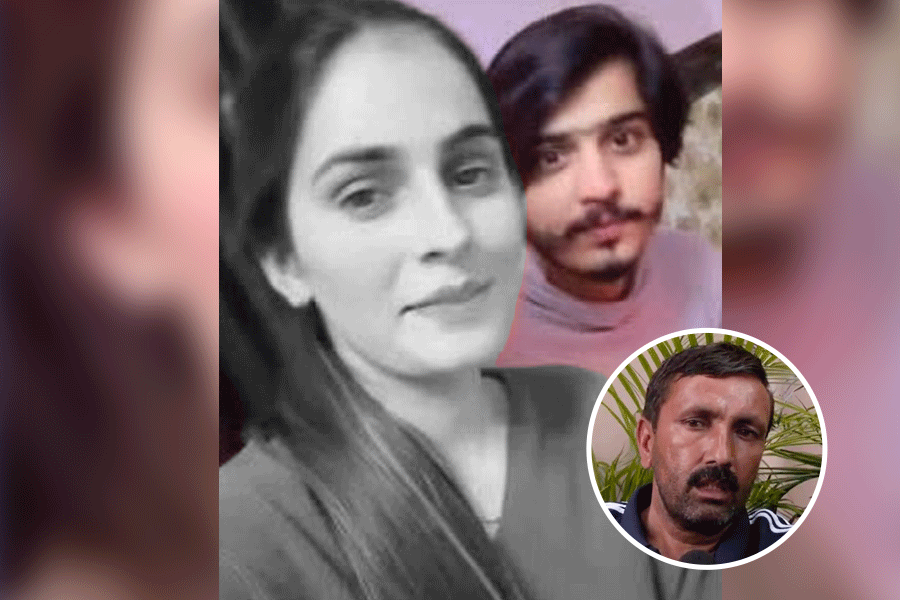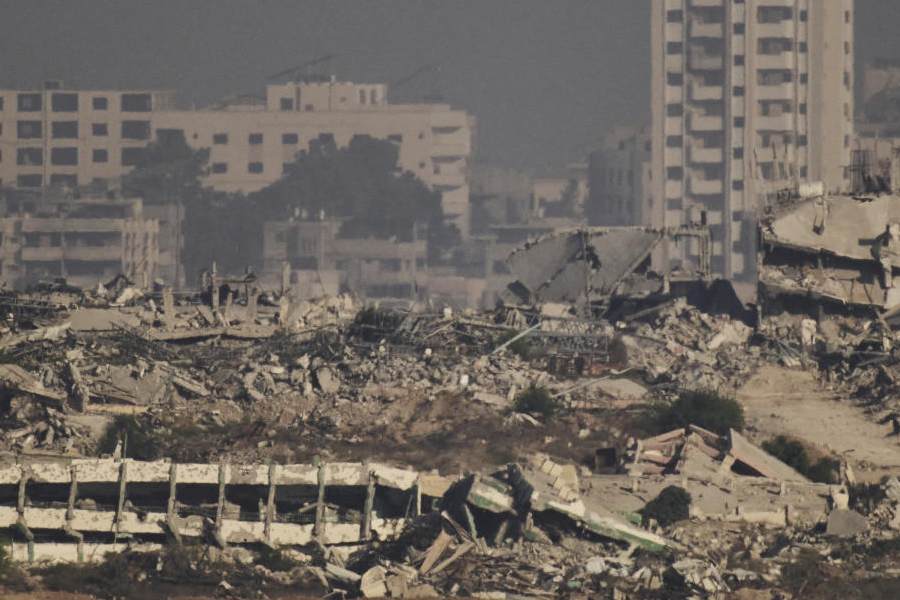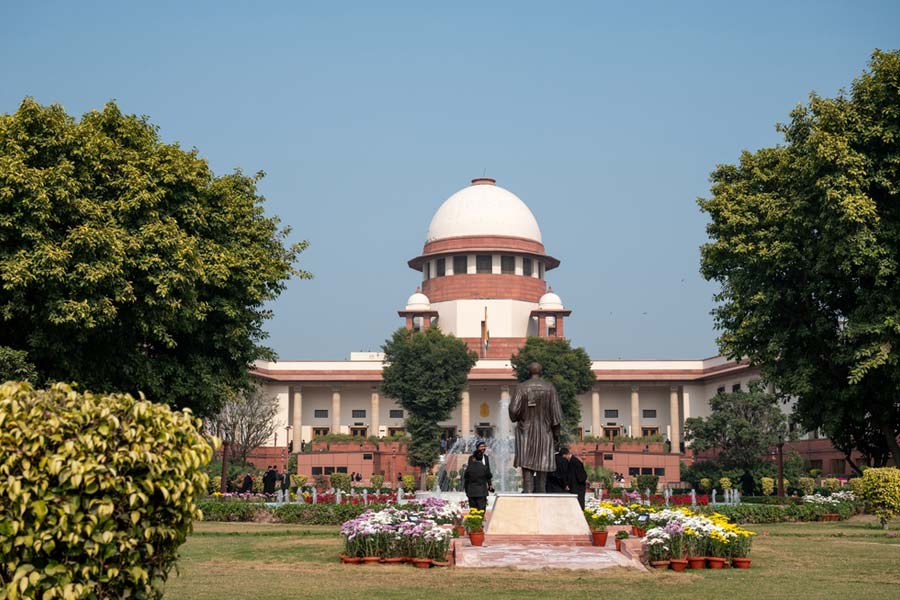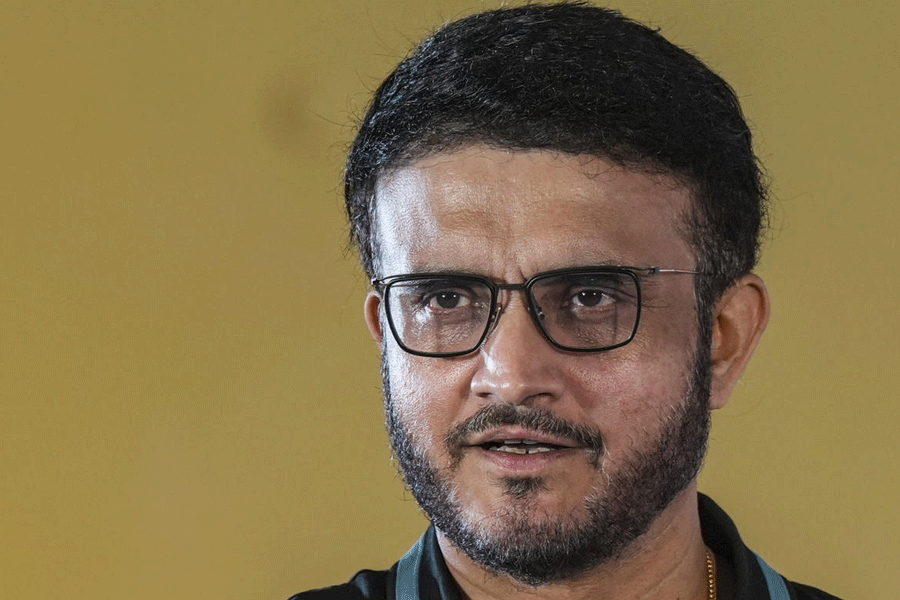16 YEARS ON, QUESTIONS ON ARMY-AIR FORCE COORDINATION & PREPAREDNESS

New Delhi, July 25: Air Marshal Birender Singh "Tony" Dhanoa walks to his desk in his fifth floor corner office in New Delhi's Vayusena Bhavan - headquarters of the Indian Air Force - and withdraws from the drawer an outsized register: his "pilot's flying log-book"
He turns the pages, neatly divided into columns and squares, filled with his own handwriting, points to one entry and says: "Yes, here it is. The first mission was on May 26."
Sixteen years ago, in 1999, Dhanoa was the commanding officer of the 17 "Golden Arrows" Squadron of MiG 21 fighter aircraft that was among those that flew the largest number of sorties over the Kargil heights, taking pictures of enemy positions and dropping bombs on designated targets "even though we started off flying nearly blind," he tells The Telegraph.
On May 26 that year, Dhanoa and then Flight Lieutenant R.S. Dhaliwal conducted the first recce over the main targets at Tiger Hill and Tololing. (Dhaliwal died later in an accident with the Suryakirans, the air force aerobatics team).

A day later, on May 27, Dhanoa's flight commander, Squadron Leader Ajay Ahuja's aircraft was shot down by a Stinger missile while it was trying to trace Flight Lieutenant K. Nachiketa (of the No. 9 squadron) whose MiG 27 had been shot down earlier. Ahuja radioed the emergency and ejected. Two days later, his body was handed over with gunshot injuries to his neck and head. The IAF believes he was killed despite having survived the ejection.
Tomorrow, when an NDA government marks Kargil Vijay Divas (Victory Day) - the NDA's Atal Bihari Vajpayee was the Prime Minister in 1999 - Ahuja's killing, and the disclosure by his commanding officer that the plane was not equipped correctly, revives the ghosts that still stalk India's military preparedness. There are also questions on whether inter-service coordination is better now. As Dhanoa has confirmed, the army and the air force took a long time getting on the same page in Kargil.
"Ahuja might have survived," says Dhanoa, "if his aircraft had CMDS (counter-measures dispensing system) that the DRDO and a public sector company was supposed to supply to us. The Stinger (surface-to-air) missile hit the fairing of his aircraft ."
The fairing on a plane is designed to make it more aerodynamic. The CMDS is deployed by an aircraft to ward off incoming heat-seeking missiles such as the Stinger.
Although celebrated by the government as a "victory", the 50-day Kargil war is still a topic of much debate and questions surrounding its causes and results are still unanswered. Army court martials and civilian courts too are yet to dispose of cases - including that of the sacked commander of the Kargil Brigade - going back to the operations in the front.
There is general consensus that militants and regulars of the Pakistani army occupied heights from 9,000ft to 14,000ft along the Kargil front that used to be manned by Indian troops. The occupiers directed Pakistani artillery fire into India's National Highway 1A that runs from Srinagar to Leh. The Indian Army's "Operation Vijay" and the IAF's "Operation Safed Sagar" was directed towards ejecting the occupiers from these positions. The objective was largely achieved with the diplomatic intervention of then US President Bill Clinton who summoned Pakistan Prime Minister Nawaz Sharif. A total of 527 Indian troopers were killed in trying to fight their way uphill against gunfire from the top.
As the commanding officer of the Golden Arrows, Dhanoa had a ringside and inside-the-fire view of the war. Since then, rising to his current office as the vice-chief of air staff, he has both the advantage of hindsight and the wherewithal to go through records.
"We practically started operational flying without any R & O (reconnaissance and observation). The army could not tell us where the enemy is or who the enemy was," he recalls.
His squadron, from the Kili Bhisiana base in Bhatinda, was deployed to Srinagar on May 21, 1999. "I remember going to Matayen (a large army base) and to the base of Tiger Hill (a high feature that came to symbolise the main target for the Indian forces and after whose recapture the war all but concluded). I met this soldier from 8 Sikh (Light Infantry) who said 'we've been sitting on Tiger Hill but we can't see them and we can't tell you anything'. When I talked to an officer flying a helo (chopper), he told me 'we don't know where to take you because we don't know where they (the enemy) are'".
This correspondent was at the base of Tiger Hill to report its recapture after an interview with the 18 Grenadiers commanding officer, Col Kushal Thakur, who was at Tiger Top. The interview was conducted over the army's wireless system.# The 8 Sikh LI that Dhanoa encountered played a stellar role itself. It held on to a spur of Tiger Hill for 23 days against enemy fire till the 18 Grenadiers finally took Tiger Top.
Dhanoa and his officers were at Mushkoh Valley, at the base of Tiger Hill, to be taken for a recce flight in an army helicopter. But they were told that that would not be possible. The Golden Arrows squadron itself specialised in photo-recce flights apart from bombing targets on the ground.
In the days that followed, it was after flights by the Golden Arrows confirmed the presence of snow-huts and Pakistani regulars in the heights that the Indian government concluded that the Pakistan army was itself at work, a development later confirmed by the then chief (and later President) Pervez Musharraf.
But till then, the Golden Arrows were practically "flying blind". On May 21, when Dhanoa and his boys landed in Srinagar, they found tarpaulin being draped over a plane inside a hangar. It was a Canberra surveillance plane. (The aircraft have since been phased out). The Canberra was shot from the ground earlier that morning but survived the return.
"I instructed the boys that in an emergency, such as the engine getting hit, they should attempt to glide back to the centre of the (Indus River) valley on the Indian side and then eject. Ahuja probably erred in turning right instead of turning left," Dhanoa recalls. That is why he fell in Pakistan-held territory.
The killing of Ahuja spurred on the squadron with "Tony" and "Dhali" leading missions. On June 3, according to Tony's logbook, they dropped two 250kg bombs on Tiger Hill. On July 8, Dhanoa flew with then Air Chief Marshal A.Y. Tipnis (now retired) on a "Battle Damage Assessment" (BDA) mission accompanying other aircraft that dropped bombs. He did not fire himself. " Chief ke saath udke thodi na bomb karenge," he explains. (You don't fire when you are flying with the chief). They flew in a two-seater trainer MiG 21. (The MiG 21 otherwise takes just one pilot in the cockpit).
Dhanoa says the political directive to not cross the LoC did restrain the air force in its operations.
"If you have to attack a tree, you must go after the stem, if you can't go for the root," he explains. "We were told to go after the branches, that too only from one side."
The vice-chief said that the absence of the light combat aircraft (since christened the Tejas) told heavily on the Indian Air Force's capabilities. "The LCA was supposed to come in by 1993," he pointed out.
The LCA is not yet declared fully operational. Sixteen years since the last war, the wait, and the lag, waxes tardy.










